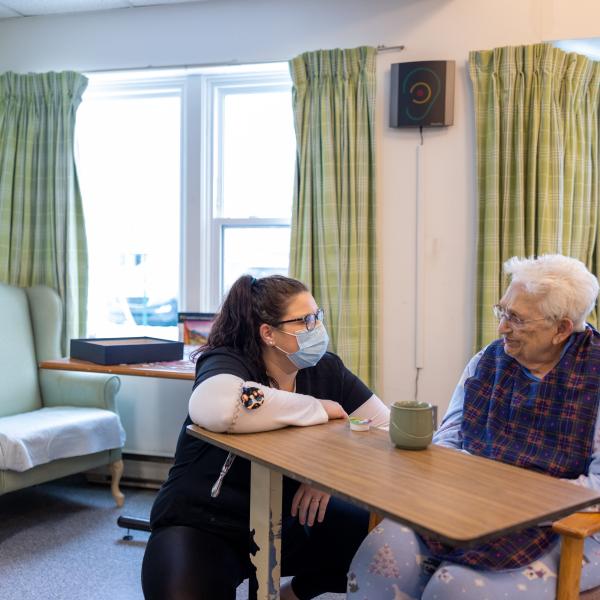Health and Social Services in Nova Scotia

Taking better care of the care providers
Nova Scotia’s health and social services sectors include hospitals and health centres, long-term care facilities, home care, social services, primary care providers, and mental health and addiction services.
More people work in health and social services than in any of the other sectors.
Almost 30% of all time-loss claims in the province come from this sector. The most common injuries or illnesses are:
- sprains and strains
- infectious diseases
- workplace violence
- being burned by chemicals
- psychological hazards (bullying, harassment)
- experiencing electrical shock
With the right safety plan, equipment, and training, all of these can be prevented.
In 2024, the health and social services sector in Nova Scotia saw:
4,415 reported injury claims
1,424 time-loss injuries
where workers missed 3 or more days of work due to their injuries.
These statistics highlight why safety training and practices are so important. Use the information you’ll find here to improve safety for you and your workers.
The top 3 time-loss injuries reported for this sector are:
- sprains and strains
- respiratory (breathing and lungs) system diseases
- concussions and brain injuries
Driving improvements
The WCB has seen major success in safety outcomes over the past decade. Injuries among health care workers has seen a dramatic drop—by 30% per cent. The improvement comes down to:
Targeted prevention
Nova Scotia Health, long-term care facilities, and home-care providers collaborated with WCB, AWARE-NS, and government partners to implement enhanced safety protocols, training, and ergonomic supports
Transitional work programs
About 90 injured health care workers in 2024 were able to stay on the job through lighter-duty assignments—such as mentoring roles—made possible by employers.
Falls & musculoskeletal injury prevention
Approximately 48–63% of injuries are related to repetitive strain and falls. The sector has focused interventions addressing manual handling, patient transfers, and facility safety standards
Use these safety resources to protect your workers
Identify where injury could happen in your workplace this risk mapping tool. You may be able to fix some hazards. For others, you may need to make sure your workers have the right training to do a dangerous job safely.
- The Better Safety Better Care campaign provides information for workers on how to avoid injury at work. Employers can also download the Leader Safety Playbook.
- The Canadian Centre for Occupational Health and Safety is a Government of Canada initiative that provides programs and services in English and French.
- AWARE NS has programs, online learning, and other resources specifically for the health care and community services sector.
Learn more about assisting a fallen resident

Learn to use the chair overhead lift safely

Learn about the importance of bed to chair compression stockings

Many businesses in Nova Scotia are required by law to have an occupation health and safety policy and program. Learn more about how to create a safety plan.
- PACE Yourself – a guide to know when to call for assistance
- PACE Yourself Pictogram – a poster for your workplace
- P- Physical - Slings – sling selection and integrity checklist
- P- Physical - Transfers – transfer assessment sheet
- P- Physical - Repositioning – guide for bed repositioning
- A - Agitation – guide for handling agitated or aggressive behaviour
- C - Communication – guide for better communication
- E - Environment – environmental scan to identify hazards
- PACE Form - safe resident handling assessment form
- PACE Logos
- Visit our YouTube page for a full suite of PACE safety videos.
When injury does happen, one of the best things you can do for your worker is help them recover at work. In fact, the sooner you get them back to the workplace, the better for their recovery. Learn more about how to create a return-to-work program.